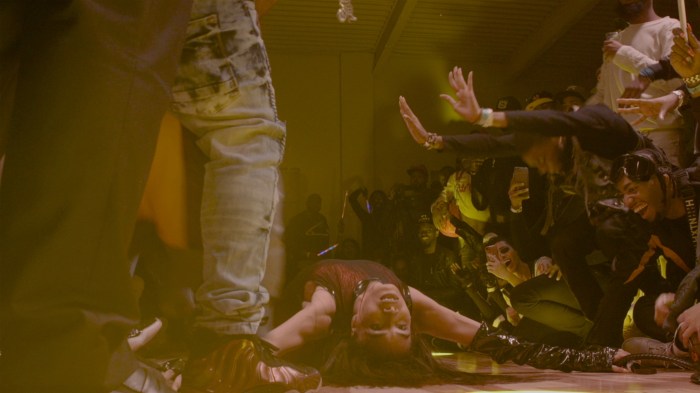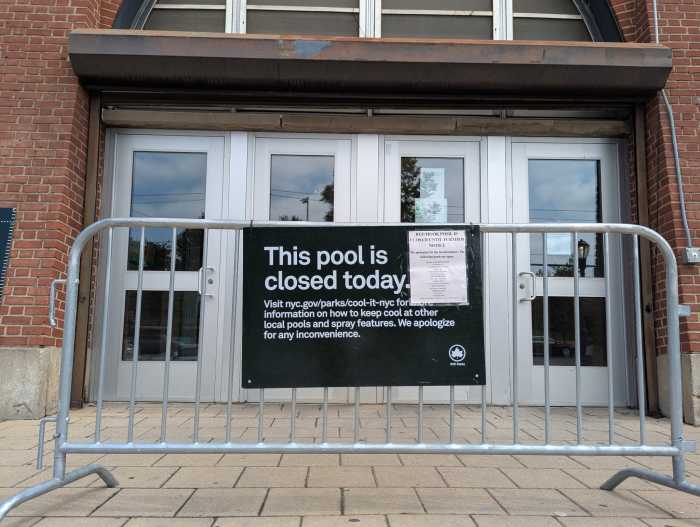Life, death, and all the movies in between feed the furious fun of Play Yourself
Can we talk about Marian Seldes for a minute? Or, perhaps, can we talk about the affect she has on an audience?
After watching Ms. Seldes in Play Yourself by Harry Kondoleon, I decided I want her to be my grandmother. Not my mother, Ms. Seldes is way too eccentric to be allowed close proximity to one’s psyche. But as a grandmother she could spoil, adore, and entertain me, just like she does on stage each night. As a grandmother (like she is an actress) Seldes would be divine.
I can imagine her taking me for café au lait and croissants at Balthazar, stealing free rides on the Staten Island Ferry—“to see the city from the proper distance”—shopping for bargain couture at Century 21, and splashing her broth all over the table while sucking soup dumplings in Chinatown. And for desert, cupcakes at Magnolia Bakery. She’d turn me into Eloise and we wouldn’t stop at The Plaza. We’d take over all Manhattan.
It’s a bizarre wish, I know. And in a theater review, this kind of fantasizing is one step away from Anne Heche territory. Yet that is the power Ms. Seldes wields in Play Yourself, at the Century Center Theater on 15th Street. (Note: Play Yourself is a New York Theater Workshop production. But their theater on East Fourth Street is occupied by the hit (re)production of Vienna: Lusthaus. It’s a prescient move for the play since Ms. Seldes last held court at the Century only a year ago in Edward Albee’s mind-bender, The Play About The Baby.) Ms Seldes vamps her way through Play Yourself. She snarls. She cackles and hisses. She swoops and she stutters; gets drunk and begs for attention. She wears a dressing gown that Cameron Diaz would die for the ability to wear so effortlessly.
Seldes is Jean, an aging movie actress used up and spit out by Hollywood a long, long time ago. Now in her twilight years, Jean is waiting out the clock with her painfully jaded adult daughter Yvonne (played by Elizabeth Marvel) who is sort of taking care of her and sort of just wallowing in a state of codependency.
With Jean and Yvonne, Kondoleon (and director Craig Lucas) has created two remarkably unique individuals, a daughter so bitter she’s can’t imagine wearing anything but black or opening her eyes more than half way, and a mother, so bitter she can’t imagine forgiving life for not turning out the way she’d hoped. The two pass time waiting for death by acting out scenes from Jean’s old movies, all apparently B-grade with Jean’s role never varying from the mistress. Strangely, they also spend time waiting for letters to arrive from a gay friend on a big trip to Europe with a new boyfriend.
Then suddenly there’s Millie, from The Dick Van Dyke Show, or at least the recognizably taut actress who played Millie so many years ago, Ann Guilbert (pictured on left with Seldes above). She is Selma, an obsessive fan of Jean’s who is also a friend of the friendless, as Lucy Ricardo once said. Jean calls her “Sellllllma” and loves the attention she brings. In exchange for the ego boost Jean allows Selma to bring a little bit of reality into her and Yvonne’s world of make-believe. Selma also, because she may be crazier than she appears, brings a crack sense of the fantastic in to the it home (emphasis on the root word “fantasy”).
Kondoleon, whose plays include Christmas on Mars and Anteroom, died of AIDS in the mid-90s before this play was ever produced. Obvious from this production is his determined belief in extraordinary twists of fate, the supernatural, or at the very least the theatrically supernatural (magical realism?) and how they can create hope and, just maybe, art. Before intermission, a man walks out from the audience to the side of the stage and tells how wonderful his memories are of Jean’s movies. He describes what it was like to watch her pulpy films for the first time. It’s an odd juxtaposition. Are her movies are supposed to be that “real,” not metaphorically real? Intermission follows shortly after so the scene is quickly forgotten.
The same man shows up in Act II as Selma’s boss, a minister at the Hopeless Shelter,. He may turn out to be Yvonne’s possible rescuer, and also a painfully honest oracle for Jean. Kondoleon was reaching for the stars with these plot points, trying to make a grand statement about fate. Such magic is in contrast to the realism of the characters, yet somehow the divergent forms complement each other. The natural urge is to try and separate the two realms, but viewers who let them stay intertwined will be rewarded.
By the end, the plot has turned and the characters have changed their minds so many times that meaning is built by an accumulation of ideas and layers. The play almost feels like a mess, and it is: a beautiful, painful mess—like life.
Kondoleon asks big questions, like who are we, essentially, when we can be so many different people? What role does the past play in our present, and can we create a future independent of either the past or present? Kondoleon’s play might be most specifically about an actress, but that’s only because an actress’s post-modern identities are obvious enough to hang an entire play on. Everyone plays a different role at different moments in life, even at different moments of the day. Play Yourself becomes quite eerie, almost scary, when it reveals so clearly how malleable what we consider our most essential selves to be.
Seldes is unbelievably funny and moving. Guilbert, near the end, performs a monologue that deserves to be long remembered for its incisive humor and sharp focus. Marvel is difficult to like. Her role is that of someone who must react more often than act. Yvonne must be quiet and give Guilbert and Seldes the stage.
Marvel does this with generous charm. Juan Carlos Hernandez will likely get the worst reviews of his career for his performance as the fan and the minister. It’s not his fault. The part feels underwritten and not fully conceptualized.
Director Craig Lucas (author of Dying Gaul, Prelude to a Kiss, and Longtime Companion among many other plays and screenplays) earned critical acclaim for his restaging of Kondoleon’s Saved or Destroyed last year. I can only imagine how good it must have been, because Play Yourself looks and feels so good.
Kondoleon and Lucas are obviously brothers-in-arms. They have the same sense of purpose in their work. They both want to find love amidst the rubble, sex among the victims, and art among the detritus of a self-immolating culture.


































